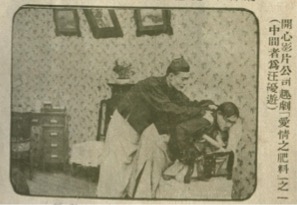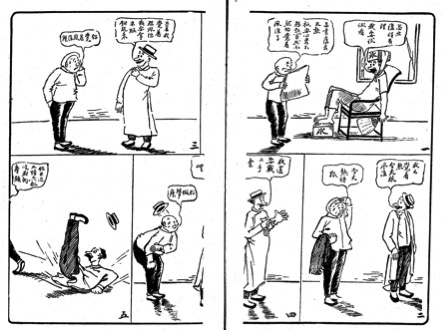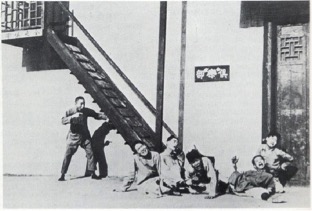Unpacking the traveler: Authority and expertise in Lonely Planet and Parts Unknown
/The following is the third of a series of blog posts written by the PhD students currently enrolled in my seminar, Public Intellectuals: Theory and Practice. Unpacking the Traveler: Authority and Expertise in Lonely Planet and Parts Unknown
by Stefanie Z. Demetriades
For many of us, the first recourse when we travel for pleasure is the tourist guidebook. Equipped with a comprehensive guide, we can meticulously plan out a “perfect trip” from start to finish - where to go when and how, what to see, what to eat, and what to avoid - before we ever set foot on foreign ground. Look, for instance, at the best-selling and ubiquitous Lonely Planet destination guides and we find an emphasis on “accurate, practical information” curated by experts that promises that ability to smoothly navigate through a space of difference with maximum autonomy and minimal discomfort or anxiety.
But what are the assumed common-sense standards that such an expert resource is built on? And what are the implications of such an expertise for how we construct a role for ourselves as travelers and how we relate to the places, people, and cultures we encounter?
For the most part, the expert authors of these guidebooks are authorities by virtue of their own non-native position. That is to say that, like the reader/hopeful tourist, the authors generally tend to be foreigners, travelers themselves. But they are travelers-plus, more experienced, made expert by virtue of their more frequent and/or more extended stays. As readers we trust them because of this parallel position to us, and we will quite literally follow in their footsteps through sites and sights they have vetted ahead. In this sense, the authority of Lonely Planet is very much the authority of the formalized, outside expert, and the narrative voice of the guide is the voice of this expert - a single guide book may have seven or eight contributing writers, but they are undifferentiated and blended into a single voice, which appears unified and objective.
From this vantage point, the experience of travel is parsed into lists and grids of expert reviews that map out the worth of sites and sights. In a pragmatic calculation of cost (financial and logistic) versus benefit, value is heavily weighted to the exceptional, in the literal sense of the out-of-the-ordinary: festivals and monuments are celebrated destinations in themselves, while everyday experiences are to be passingly enjoyed en route to the primary attractions.
The “authentic” is the ultimate prize, and is bound up most closely with history as a largely self-contained, static past. The guides may include reviews of nightclubs, resorts, art galleries, and five-star restaurants - but the stamp of “authentic” is reserved primarily for the pastoral, the “simple,” the “old,” and the “forgotten:” In this pragmatic quest we gain clarity and certainty, but the overall effect is to construct an eerily uninhabited, museum-like space of appraisal where personal agency and dynamic interaction haven’t quite made it to the page.
Do we accept this as inevitable product of the genre, or as a necessary compromise of form and function? Or are there possibilities of alternative visions of the tourist in the travel genre?
Enter Anthony Bourdain and Parts Unknown. With its tagline of “Get Hungry. Get Lost.” the CNN travel show hosted by the notoriously grouchy chef, author, and TV personality immediately turns the premise of the travel guide paradigm inside out, promising to embrace everything the guidebooks are designed to guard against.
Unlike the “everything you need to know” thoroughness of the guides, Parts Unknown makes no attempt at offering a comprehensive study of the subject destination, and covering ground certainly does not seem to be a goal in its own right. (Most of the Thailand episode, for instance, takes place in a single night of barhopping in Chiang Mai). A major draw for the show has been its episodes in politically tense and notoriously risky destinations (Iran, Myanmar, Congo), but the show also covers popular getaway destinations and unsettles the exotic, “off-the-map” narrative with destinations familiar to the American audience (Massachusetts, Detroit, New Jersey).
Here Bourdain is not the autonomous guide but the very much dependent traveler, and his local hosts are clearly positioned as the primary sources of authority. “I arrive in this country spectacularly ignorant,” he says in the South Africa episode, “I will leave spectacularly ignorant.” Where popular guidebooks in the vein of Lonely Planet turn on an authority branded as studied expertise, authority in Parts Unknown is personal and subjective. The language of the show is that of the first person - the voices of the local hosts and Bourdain’s own self-reflexive monologues, which serve as the voiceover narration in each episode and are very much personal reflection rather than assured description.
[video width="1280" height="720" mp4="http://henryjenkins.org/wp-content/uploads/2016/02/The-side-of-Jamaica-you-never-get-to-see-Anthony-Bourdain-Parts-Unknown.mp4"][/video]
Bourdain’s first-person voiceovers and candidly political personal conversations are characteristic of Parts Unknown
The effect is to anchor knowledge and authority in an individualized context, so that even when generalized statements are made about, for instance, national character, it is not a disembodied, assumed fact but a personal perspective consciously laden with bias and baggage. As Bourdain himself notes in a 2015 interview:
I should be trusted and mistrusted as much as anyone. I'm a guy with a point of view who goes to a place, looks around, comes back and tries to give as honest an account of my experience as I can, but it is my experience.
Bourdain appears - at least in the visible narrative that makes it to the screen - to happily concede autonomy to his local hosts, who whisk him between their personal favorite sights, sounds, and tastes. Occasionally the point will be driven home by the risk of a particular situation - often culinary (a potentially poisonous blowfish dish), sometimes situational (a growing crowd angered by the presence of the cameras). In these cases risk is managed not by independence but rather by increased dependence. “You have to relax. Nothing will happen to you,” says his South African host as Bourdain follows him down the street. “I invited you to have this dish. We are not going to die,” says his Brazilian host, and with a winking nod to a bottle of beer, “that will protect you from the poison.” And Bourdain? “I am confident in this cook I don’t know, and in this man, my host and aficionado of this dish.”
Perhaps as direct result of this emphasis on the authority of lived experience the metrics of value and authenticity are shifted in Parts Unknown. Here the exceptional recedes to becomes a backdrop for the everyday. Monuments and festivals might be glimpsed as part of an edited montage, but faces and conversations get far more airtime. Meaning becomes something that is created and grounded in the practices and experiences of ordinary life rather than abstracted and held apart. Bourdain is explicit in this conscious orientation towards the personal:
Ideally I’m looking to learn what it’s like to live in that country, what people who’ve lived there their whole lives like, what gives them pleasure at 2 o’clock in the morning after they’ve had a few drinks. The details. The typical things. Not the sites, not necessarily the most important things … I go in, I try to talk to people about ordinary thing, and in doing that, they often say extraordinary things back to me.
And if it doesn’t entirely abolish the notion of the authentic, Parts Unknown certainly takes a much more expansive approach to it. The word “authentic” itself is rarely heard, and indeed if it is mentioned it tends to be in a context challenging its relevance, as in the Morocco episode:
You can well imagine the American guy who's lived in Tangier for 30 years. OK? He comes in and there's a flat screen TV on the wall, he's like, what the … You've ruined the authenticity and the integrity, but the Moroccan guy at the next table is like, wait a minute, wait a minute, asshole, do you have a flat screen TV at home? I want one, too. What's wrong with that?
Authenticity is prised away from the tradition/modernity dichotomy that dominates much of the travel genre. History and context are still important, and Bourdain speaks with respectful awe of dishes and traditions that have been passed down for centuries, but history here is integrated into dynamic formations of the present, not a static relic of abstract purity. And so a trip to Libya includes a meal at Uncle Kentucky’s Fried Chicken as well a traditional coffee house and a family barbeque, and meals in South Africa include Iftar with a Muslim family as they break their Ramadan fast as well as an array of dishes from across the African diaspora. Intertwined with tradition, pleasure, and everyday practice, authenticity is not a binary state but an ongoing and creative performance.
So does Parts Unknown truly represent a different logic, or underneath the new packaging do we find the same fundamental assumptions as our travel guides?
Parts Unknown is hardly an empty vessel, free of agenda or control. A long preproduction process plots out the logistics of the trips as well as the narrative theme for each episode. Local hosts are carefully selected to match. There is little question that Parts Unknown is no less curated an experience than the “create your perfect trip” promised by Lonely Planet. Likewise, local knowledge and voices are granted more play, but at the center of the show is still a white male in a privileged position who shapes the narrative and presentation. Echoes of exoticism and Orientalism persist - “Once you experience some of the sensory pleasures of the East, your previous life just isn’t adequate anymore,” Bourdain reflects in Chiang Mai. His hosts are predominantly (though not always) male, and “other Others” remain largely invisible, or else a source of half-joking anxiety, as with the ladyboys of Thailand:
So, I woke up in a state of confusion and deep concern after making out with Ernest Borgnine last night. I have spiraled into some identity crisis. Inadvertently making out with Ernest Borgnine, I would like to say. It was very dramatic. I need to go to a strip club and watch a football game, mow the lawn and barbecue all at the same time.
Power asymmetries are also still very much at play, with Bourdain’s privilege of access and resources often thrown into relief as Bourdain is framed as guest rather than client: for all his meals at restaurants and food stalls he is rarely seen paying for anything, and when sharing meals in homes and villages there is a definite discomfort in knowing that, even if there is some kind of compensation, Bourdain as privileged guest is sharing food that is not always in boundless supply for his hosts.
There is plenty of reason to be cautious, therefore, about an uncritical celebration of Parts Unknown as a complete break away from many of the problematic tendencies of the travel genre. But with all that in mind, what is striking about the program is its insistently reflexive subjectivity, so different from the studied objectivity of Lonely Planet. Bourdain consistently expresses a self-awareness and ambivalence of his own position and role as host and traveler, and in conversations with his guides and in his monologue voiceovers he acknowledges both the uncertainty and the genuine discovery of travel, and both the genuine joy and the intense discomfort that can entail.
The very form and style of the show also emphasize subjectivity: editing and directorial styles vary from episode to episode, so that the form and aesthetic choices never quite feel assumed or matter-of-course. The show often adopts a personal point-of-view perspective in the composition and editing of a scene: the picture wavers and distorts as Bourdain gets increasingly inebriated through an all-night bender in Chiang Mai, for instance. So when the lens camera lingers on scantily clad bodies in Brazil as Bourdain comments that “the colors of the city are amazing…the colors of the people are amazing, and the way they move,” this charged representation is so inextricably linked with Bourdain’s own gaze that it nevertheless works to challenge notions of the objective, dispassionate expert observer, reinforcing instead the emotional and subjective position of Bourdain as author-observer-participant.
Is it patently unfair to compare a text-based guidebook and a visual entertainment program? Perhaps. After all, they perform different functions through different mediums; their usefulness, accessibility, and appeal are measured by different metrics. Nor are Lonely Planet and Parts Unknown mutually exclusive competitors - no doubt there is a significant overlap in audience. Nevertheless, to consider these two representations together is to look critically at the assumptions of authority and value that underpin how we imagine and construct ourselves as travelers.
Is Parts Unknown entirely unproblematic from a critical perspective? Of course not. But the show seems to at least begin to unsettle some of the assumptions and commonsense standards of the travel genre with greater attention to local voices and knowledge, and, crucially, with greater recognition of how powerfully and inherently subjective the form really is. If there’s a cautious hope we can eke out of watching the show it’s that the travel genre is not inevitably fated to an endless cycle of reproducing the same patterns and ruts, that there are alternative frames, visions, and logics through which we can imagine ourselves as tourists.
Stefanie Demetriades is a doctoral student at the University of Southern California studying media and communication.

















































 By now, it is late afternoon and the mosque is teaming with activity. There’s a large pool of water in the center, and people are gathered around to wash their feet and socialize. Over head, we see kite battles taking place and every so often, a kite gets severed from its cord (thanks to the success of a rival) and goes drifting off into the sky. We see such a wide array of different kinds of clothing here as Muslims come from all over the country and beyond to worship here. We are not here at prayer time, but we are told on high holy days that the courtyard will be completely full of worshippers bowing towards Mecca. We exit the Mosque and walk around the shop district a bit, but we are running out of time and still have several more stops to make today, so it’s back to the rickshaws and then down the street as fast as our poor guys can peddle, weaving in and out of traffic.
By now, it is late afternoon and the mosque is teaming with activity. There’s a large pool of water in the center, and people are gathered around to wash their feet and socialize. Over head, we see kite battles taking place and every so often, a kite gets severed from its cord (thanks to the success of a rival) and goes drifting off into the sky. We see such a wide array of different kinds of clothing here as Muslims come from all over the country and beyond to worship here. We are not here at prayer time, but we are told on high holy days that the courtyard will be completely full of worshippers bowing towards Mecca. We exit the Mosque and walk around the shop district a bit, but we are running out of time and still have several more stops to make today, so it’s back to the rickshaws and then down the street as fast as our poor guys can peddle, weaving in and out of traffic.